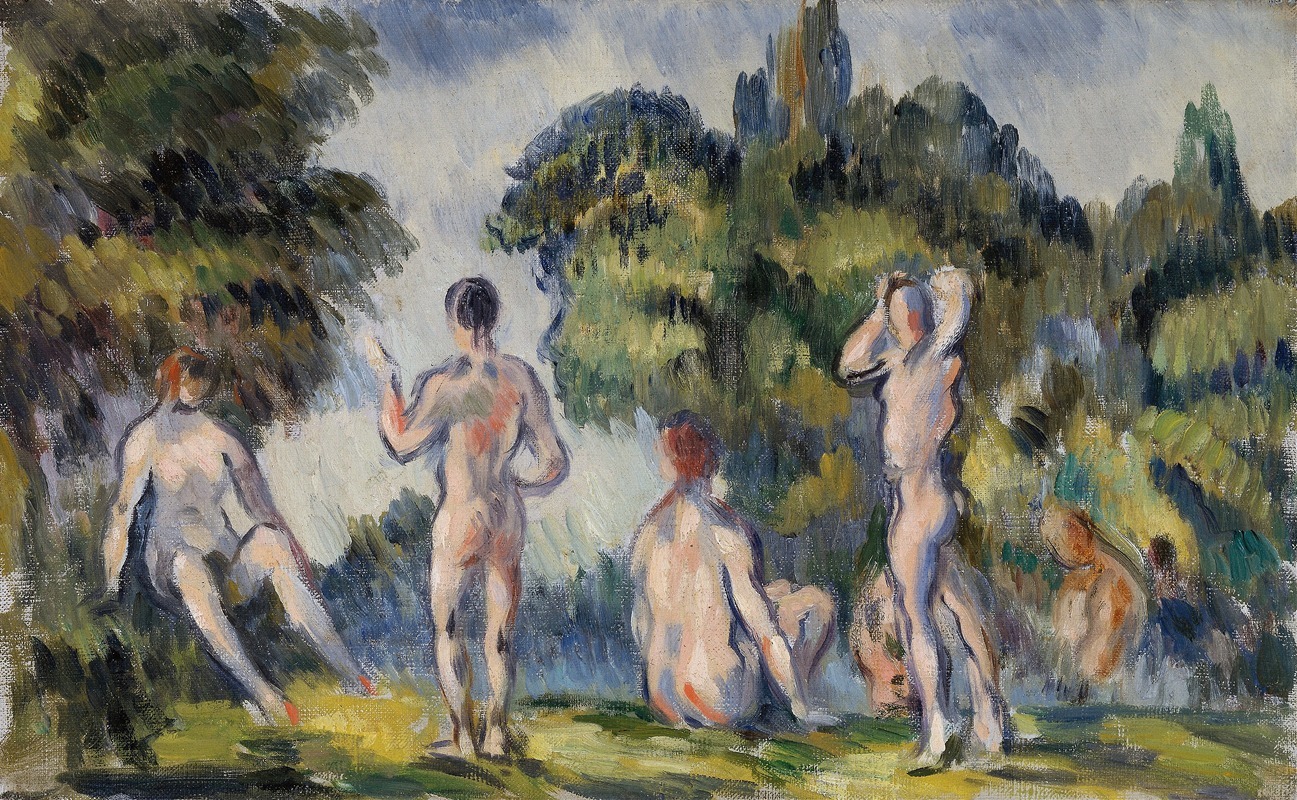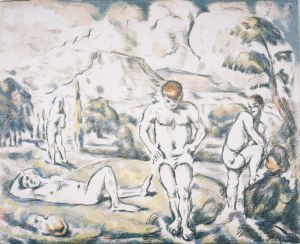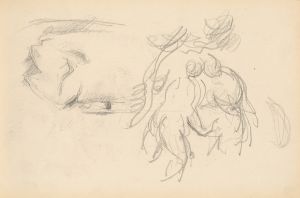
Bathers
A hand-painted replica of Paul Cézanne’s masterpiece Bathers, meticulously crafted by professional artists to capture the true essence of the original. Each piece is created with museum-quality canvas and rare mineral pigments, carefully painted by experienced artists with delicate brushstrokes and rich, layered colors to perfectly recreate the texture of the original artwork. Unlike machine-printed reproductions, this hand-painted version brings the painting to life, infused with the artist’s emotions and skill in every stroke. Whether for personal collection or home decoration, it instantly elevates the artistic atmosphere of any space.
"Bathers" is a recurring theme in the works of French Post-Impressionist painter Paul Cézanne, who is renowned for his unique approach to form and color, which laid the groundwork for the transition from 19th-century artistic concepts to a radically different world of art in the 20th century. Cézanne's exploration of the "Bathers" theme is most prominently represented in a series of paintings he created over several decades, with the most famous being "The Large Bathers" (Les Grandes Baigneuses), completed around 1906.
Cézanne's "Bathers" series is characterized by its depiction of nude figures in a natural landscape, a subject that has been a staple in art history but is reinterpreted through Cézanne's distinctive style. Unlike the more sensual and detailed nudes of his predecessors, Cézanne's bathers are often rendered with a sense of solidity and monumentality, emphasizing geometric forms and the interplay of color and light over detailed anatomical accuracy. This approach reflects Cézanne's interest in capturing the underlying structure of the natural world, a pursuit that influenced many modern artists, including the Cubists.
"The Large Bathers" is perhaps the most celebrated of Cézanne's works in this series. The painting is notable for its grand scale and the way it synthesizes figures and landscape into a cohesive whole. The composition features a group of nude women arranged in a triangular formation, set against a backdrop of trees and water. The figures are depicted with a sense of timelessness and abstraction, their forms simplified into interlocking shapes that echo the surrounding environment. This integration of figures and landscape is a hallmark of Cézanne's mature style, reflecting his belief in the harmony between humanity and nature.
Cézanne's use of color in the "Bathers" series is also significant. He employs a palette of muted earth tones and cool blues, creating a sense of depth and atmosphere that enhances the overall composition. The brushwork is varied, with some areas of the canvas displaying broad, sweeping strokes, while others are more delicately rendered. This technique contributes to the dynamic quality of the paintings, inviting viewers to engage with the work on both a visual and emotional level.
The "Bathers" series was not widely appreciated during Cézanne's lifetime, as his unconventional approach to form and color was often misunderstood by his contemporaries. However, his work gained recognition posthumously, and he is now regarded as a pivotal figure in the development of modern art. Cézanne's "Bathers" have been influential in shaping the direction of 20th-century art, inspiring artists such as Pablo Picasso and Henri Matisse, who admired his ability to convey the essence of his subjects through innovative techniques.
In summary, Paul Cézanne's "Bathers" series represents a significant contribution to the history of art, showcasing his revolutionary approach to depicting the human form and landscape. Through his exploration of this theme, Cézanne challenged traditional artistic conventions and paved the way for future generations of artists to explore new possibilities in visual expression.


















